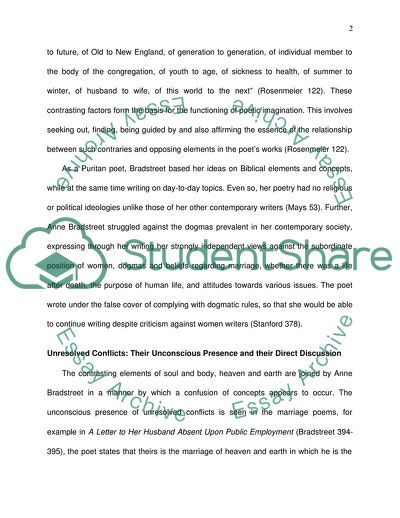Cite this document
(The Conflict in the Poetry of Anne Bradstreet Assignment - 2, n.d.)
The Conflict in the Poetry of Anne Bradstreet Assignment - 2. https://studentshare.org/literature/1726335-final-exam
The Conflict in the Poetry of Anne Bradstreet Assignment - 2. https://studentshare.org/literature/1726335-final-exam
(The Conflict in the Poetry of Anne Bradstreet Assignment - 2)
The Conflict in the Poetry of Anne Bradstreet Assignment - 2. https://studentshare.org/literature/1726335-final-exam.
The Conflict in the Poetry of Anne Bradstreet Assignment - 2. https://studentshare.org/literature/1726335-final-exam.
“The Conflict in the Poetry of Anne Bradstreet Assignment - 2”. https://studentshare.org/literature/1726335-final-exam.


